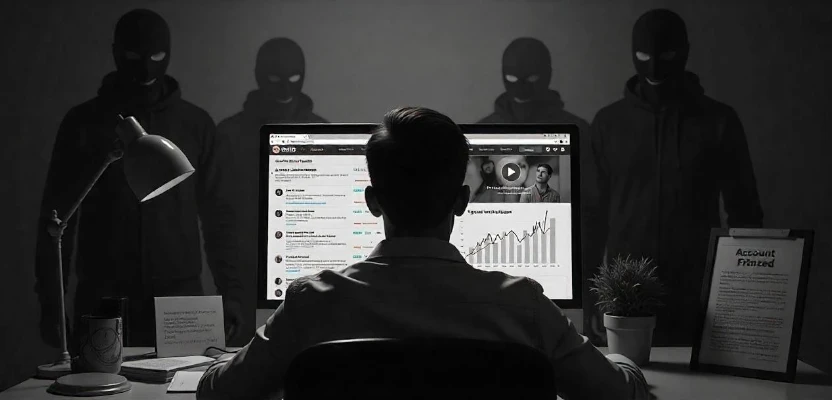
April 2025 — Spain. What started as a flashy investment opportunity backed by celebrity faces ended in financial ruin for over 200 victims worldwide. The twist? None of the endorsements were real. They were deepfakes—AI-generated videos designed to deceive.
In an operation dubbed “COINBLACK – WENDMINE”, Spanish law enforcement dismantled a criminal network that used advanced technology and emotional manipulation to orchestrate a multi-million-euro crypto scam. With over €19 million stolen, this case is one of Europe’s most sophisticated examples of tech-enabled fraud.
The Perfect Crime, Powered by AI
The fraud scheme was both simple and incredibly sophisticated.
The criminals lured victims through online ads and social media campaigns, promoting what looked like exclusive cryptocurrency investment platforms. These platforms appeared professional, showing high returns, interactive dashboards, and real-time growth charts. But it was all fake.
To build trust, the scammers created deepfake videos using the likenesses of well-known celebrities, financial experts, and media figures. These videos showed trusted public personalities apparently endorsing the investment schemes. For many victims, this visual “proof” was enough.
But the faces and voices were generated by AI—realistic, high-resolution, and convincing. The celebrities had no idea their likenesses were being used. The victims never stood a chance.
A Well-Oiled Machine
Investigations revealed that the scam had a professional structure. The group operated from several Spanish cities including Alicante, Torrevieja, Santa Pola, and Villajoyosa. It used over 50 shell companies to launder money and dozens of fake identities to evade detection.
Six suspects, aged between 34 and 57, were arrested. The ringleader, a woman preparing to flee to Dubai, was found with multiple forged documents and devices used in the fraud. During police raids, authorities seized:
- Hard drives and mobile phones
- Fake identification documents
- A replica firearm
- €100,000 in frozen funds
- Cryptocurrency accounts linked to the fraud
International coordination, especially with Europol, played a key role in tracing the digital trail.
The Psychological Trap
The scam didn’t just rely on fake videos. It preyed on human emotion—especially trust, fear, and urgency.
Victims were often contacted by someone posing as a financial advisor or a romantic interest. The relationship was built carefully. Once trust was established, the victim was invited to invest in the crypto platform. Initial investments showed large profits, visible on the fake dashboards.
Encouraged by early success, many victims invested more.
Then came the freeze.
Suddenly, the victims were told that their accounts were blocked—due to technical errors, legal requirements, or tax issues. To recover their funds, they were asked to pay a “release fee.”
After that, came another trick. Fraudsters impersonated European law enforcement officers or British lawyers, claiming the victims’ funds had been recovered—but now international tax payments were required to return the money.
Some people paid multiple times, desperate to recover their savings. Many lost tens or even hundreds of thousands of euros.
Deepfakes: The New Face of Fraud
The use of deepfake videos marked a dangerous shift in cybercrime. Unlike phishing or basic impersonation, deepfakes create visual and emotional credibility. People are far more likely to believe something they can see and hear.
These AI-generated videos were high-quality, realistic, and emotionally persuasive. They appeared across multiple platforms and were tailored to specific audiences. If you followed a financial influencer, you’d likely see that person in the next deepfake pushing the scam.
Experts warn this is only the beginning. As AI tools become more powerful and accessible, the potential for abuse is rising rapidly.
Protecting Yourself in the AI Era
Law enforcement offers clear advice to stay safe:
- Don’t trust appearances alone. Videos can be faked. Always verify from independent sources.
- Check company registration with regulators like Spain’s CNMV or the Bank of Spain.
- Be skeptical of “guaranteed returns”. No investment is without risk.
- Never share personal data or money with unverified individuals or platforms.
- Report suspicious activity immediately, even anonymously.
Lessons from the COINBLACK Case
This case isn’t just a warning—it’s a wake-up call. In the digital age, trust can be manufactured. Reality can be simulated. And fraud is no longer just about money—it’s about manipulating belief.
The victims of this scam were from all walks of life. They weren’t foolish or careless. They were targeted, manipulated, and deceived using cutting-edge technology.
As AI continues to shape our future, we must also evolve our awareness. Deepfakes may entertain or impress—but in the wrong hands, they destroy lives.




Comments 0